Results
The 30 Dor observations were offset by several arcminutes to the north of the brightest part of the nebula. Medians were constructed for each of the two telescope positions and the results were added to increase the area on the array where the [O III]88µm emission line can be detected. No other emission line was detected in the spectrum. The median of columns 2-12 is displayed below and the measured position of the emission line is at pixel 21.77.
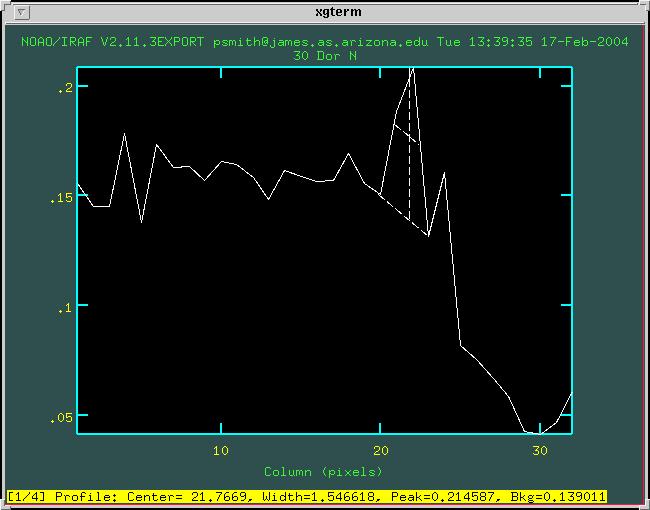
Both the [O III] and the [N III]57µm emission lines were detected in the medianed (columns 2-12) spectrum of NGC6543 shown below. The positions of the lines are pixel 21.36 for [O III] and pixel 3.57 for [N III]. This yields a non-distortion-corrected dispersion of 1.72 µm/pixel along the columns (Y) of the detector array.
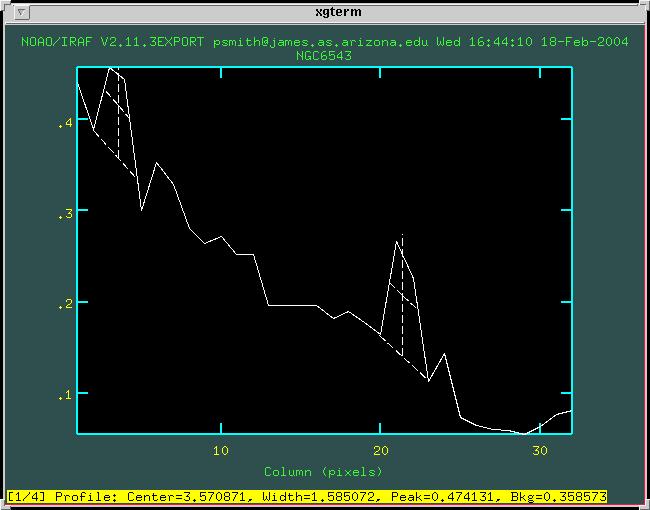
As with NGC6543, both [O III] and [N III] were detected in the median (columns 2-12) spectrum of NGC6826 (see below). The positions of the lines are pixel 21.30 for [O III] and pixel 3.36 for [N III], yielding a non-distortion-corrected dispersion of 1.70 µm/pixel along the columns (Y) of the detector array.
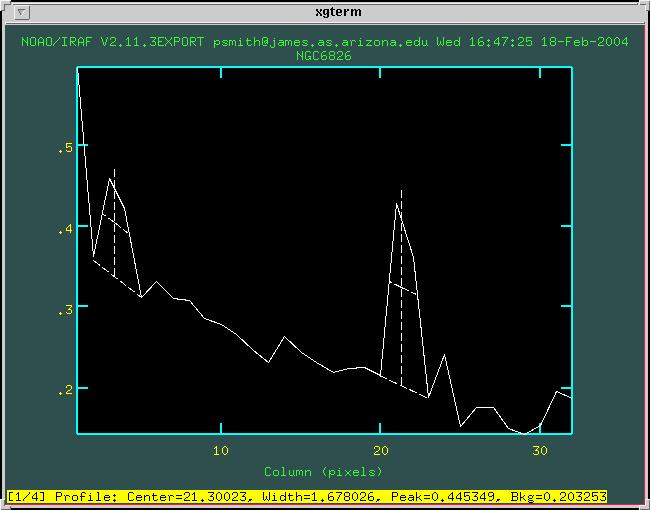
The planetary nebula IC3568 is much fainter that either NGC6543 or NGC6826, and only the [O III]88µm was detected at both telescope pointings (see the following two figures). The first figure shows the median spectrum for columns 2-6 and the second figure shows the median spectrum for columns 8-14 which includes the bad readout section (i.e., the values for pixels 1-8 in the spectrum are invalid). The [N III] emission line cannot be definitively identified in the spectrum that avoids the bad readout. For comparison with the other objects, and since the [O III] cannot be identified across the entire length of the slit (columns 1-16 for Side A), an average of the two spectra was used to measure the position of [O III]88µm at approximately column 7. As a result, the position of [O III] is at pixel 21.13.
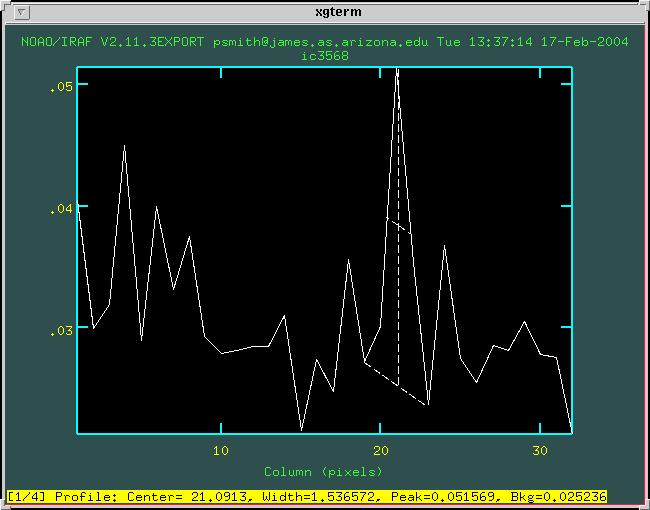
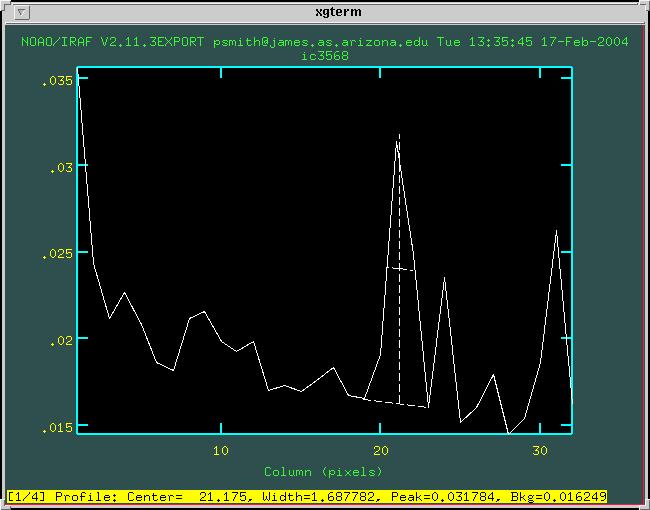
These measurements, averaged with the results of MIPS-145K yield the following parameters for the SED mode (THESE RESULTS SUPERSEDE THOSE FROM CAMPAIGN K):
- Dispersion: 1.711 µm/pixel
- Averaged pixel position of [O III]88µm at pixel 7 along the spatial axis: 21.44
- Blue edge (blue edge of pixel 1 along the dispersion axis) of the spectrum (at pixel 7 along the spatial axis): 51.7µm
- Red edge (red edge of pixel 32 along the dispersion axis) of the spectrum (at pixel 7 along the spatial axis): 106.4µm
The position of the [O III]88µm line was measured along the slit in the spatial direction for all four nebulae. It is found that the line center shifts by at most 0.5 pixel in the dispersion direction from one end of the useful portion of the slit to the other (array columns 1-16). These measurements are consistent with the measurements of [O III]88µm made from 30 Dor in IOC Campaign K along the entire length of the SED slit (Side A and B of the 70µm array). The table below shows measurements of the line at various positions along the slit for the four targets.